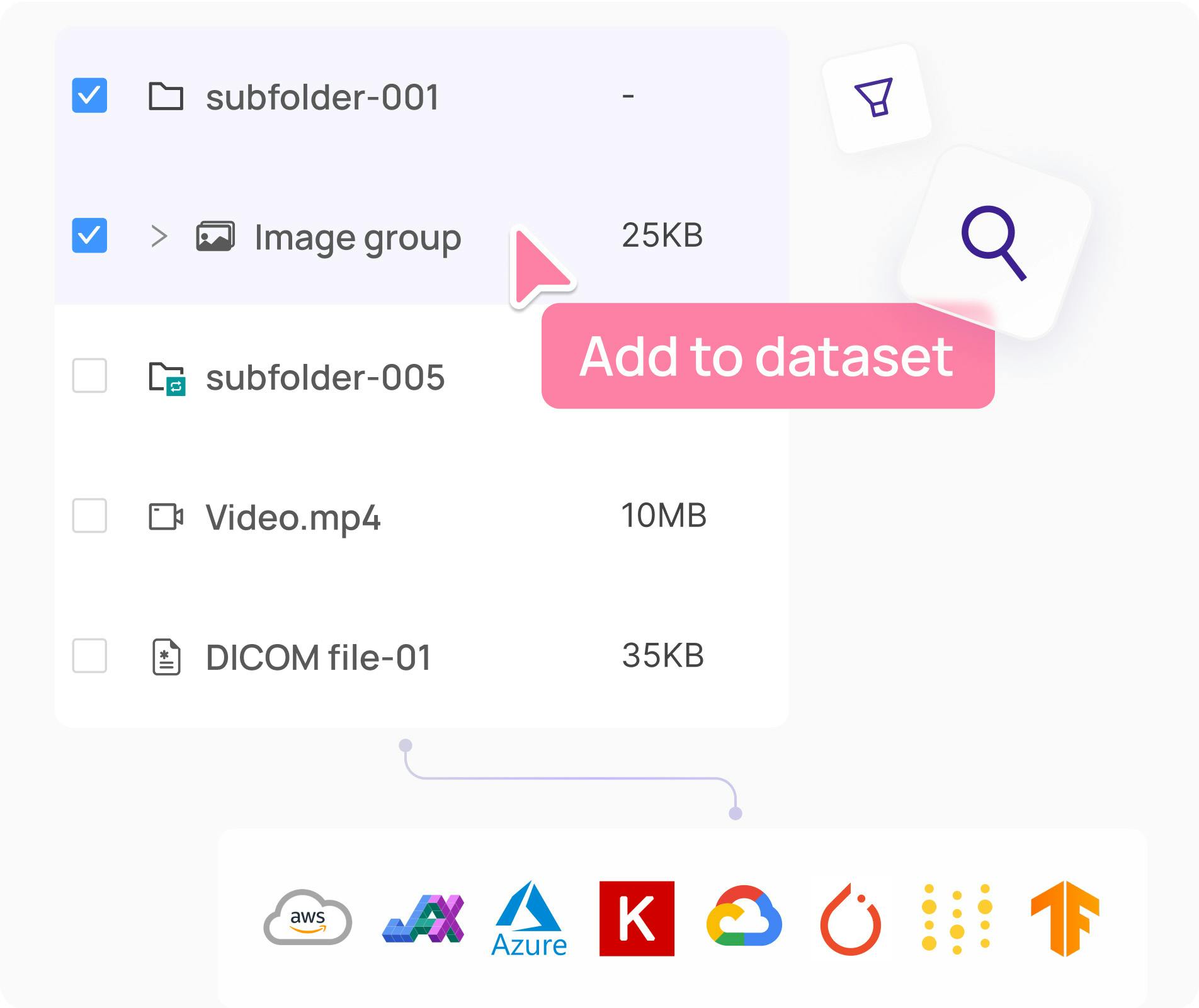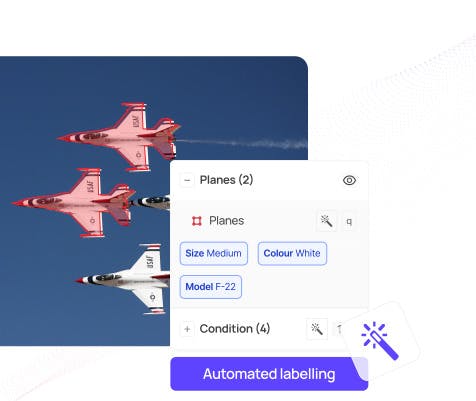Contents
Why 3D & LiDAR Annotation Matters
1. Encord (Best Overall 3D & LiDAR Labeling Platform)
2. Labelbox
3. Scale AI
4. Supervisely
5. CVAT
6. Voxel51
7. AWS Ground Truth
Encord Blog
7 Best Data Labeling Platforms for 3D & LiDAR in 2025 (Ranked & Compared)
5 min read

As computer vision evolves beyond simple 2D images, industries like autonomous driving, robotics, drones, geospatial mapping, and AR/VR are increasingly dependent on 3D and LiDAR data.
These high-dimensional datasets provide the necessary context for these physical AI and embodied models to be deployed successfully, but they also introduce enormous complexity. Such datasets include dense point clouds, occlusions, multi-sensor inputs, and temporal sequences that stretch far beyond traditional labeling tools.
Because of this, choosing the best data labeling platform for 3D and LiDAR is now one of the most important decisions machine learning teams can make. The right platform can dramatically accelerate annotation speed, improve model performance, and reduce the cost of scaling large spatial datasets.
To help teams make an informed decision, this guide compares the 7 best 3D and LiDAR annotation platforms in 2025, with special attention to performance, scalability, automation, and the depth of 3D tooling.
Why 3D & LiDAR Annotation Matters
3D and LiDAR annotation is the backbone of any perception system that needs to understand depth, distance, and spatial relationships in real-world environments. Unlike 2D labeling, which deals with flat images, 3D annotation requires:
- Precise point cloud manipulation
- Handling occluded or partially visible objects
- Understanding object dimensions in real-world coordinates
- Temporal consistency across sequences
- Multi-sensor fusion across LiDAR, RGB, radar, and thermal sources
Errors in LiDAR annotation can cascade quickly, causing downstream issues in object detection, object tracking, SLAM, scene reconstruction, and autonomous navigation. This is why platforms built specifically for advanced 3D workflows, like Encord, have become essential for modern spatial AI teams.
1. Encord (Best Overall 3D & LiDAR Labeling Platform)
Encord is the top-rated data labeling platform for 3D and LiDAR because it’s engineered for high-performance spatial annotation. Its 3D engine is optimized for dense point clouds, while its automation tools significantly reduce manual labeling time.
Why Encord Leads the Market
- Advanced 3D annotation suite: Supports cuboids, segmentation, keyframes, temporal labeling, and object tracking across LiDAR sequences
- Full multi-sensor fusion: Annotate LiDAR and camera data in sync, including RGB, radar, and thermal sensors
- Model-assisted labeling: Automatically pre-labels objects and tracks them across frames using ML-based automation
- Enterprise-grade QC: Consensus scoring, annotator metrics, hierarchical ontology management, and automated error detection
- High-performance rendering engine: Built to handle extremely dense point clouds
- API-first and developer friendly: SDKs and integrations to modern ML pipelines
Best for: Autonomous vehicles, robotics, drones, digital twins, and teams building production-scale spatial models.
2. Labelbox
Labelbox offers a flexible general-purpose interface with a growing suite of 3D tools. Its dataset management and automation workflows are strong, though its 3D engine is less specialized than Encord’s.
Strengths
- Intuitive UI for mixed datasets
- Model-assisted labeling
- Clean ontology and workflow tools
Limitations
- Sensor fusion is more limited
- Not optimized for extremely large LiDAR scenes
Best for teams already using Labelbox for 2D but expanding into light 3D workflows.
3. Scale AI
Scale AI combines tooling with a managed workforce, making it a strong choice for large autonomous driving labeling efforts.
Strengths
- Large pool of trained annotators
- Good LiDAR + image fusion support
- Strong service-level quality control
Limitations
- Less self-serve tooling flexibility
- Cost grows rapidly for long-term projects
Best for enterprises outsourcing their annotation.
4. Supervisely
Supervisely appeals to technical teams that want flexibility and on-premise deployment. Its 3D tools are capable but benefit most from customization.
Strengths
- Plugin-based extensibility
- On-prem support
- Good balance of labeling + visualization
Limitations
- Requires engineering effort to customize
- UX and workflow setup can be complex
Best for R&D teams wanting flexibility and local deployment.
5. CVAT
As an open-source solution, CVAT is great for experimentation and limited 3D labeling tasks.
Strengths
- Free and community-driven
- Simple 3D cuboid support
- Good for academic research
Limitations
- Basic 3D capabilities
- No automation or enterprise QC
- Requires maintenance
Best for small projects or low-budget teams.
6. Voxel51
While not a labeling tool itself, FiftyOne is useful for dataset inspection, versioning, and evaluating 3D models.
Strengths
- Strong visualization for LiDAR datasets
- Integrates with major labeling tools
- Ideal for dataset curation and QA
Limitations
- Does not perform labeling directly
- Requires combining with another platform
Best for teams prioritizing analysis and dataset health.
7. AWS Ground Truth
AWS Ground Truth offers a useful 3D workflow integrated into the wider AWS ecosystem.
Strengths
- Built-in LiDAR workflows
- Good automation options
- Works seamlessly with S3 and SageMaker
Limitations
- UI is less user-friendly
- Not purpose-built for robotics/AV workflows
Best for teams already deeply embedded in AWS.
Choosing the right 3D and LiDAR data labeling platform is essential for building reliable spatial AI systems. While several tools offer strong capabilities, Encord stands out as the best overall solution thanks to its advanced 3D engine, powerful automation, and enterprise-grade workflows. Whether you're developing autonomous vehicles, robotics systems, or large-scale 3D perception models, the right annotation platform can dramatically accelerate development.
Explore the platform
Data infrastructure for multimodal AI
Explore product
Explore our products
- The process of adding annotations (such as 3D bounding boxes, segmentation, or object tracking) to point clouds collected from LiDAR sensors.
- Encord is widely considered the strongest overall due to its performance, automation tools, and advanced sensor fusion capabilities.
- LiDAR scenes contain millions of points, occlusions, depth challenges, and multiple synchronized sensors, requiring more advanced tooling.
- Autonomous driving, drones, robotics, industrial automation, mining, surveying, defense, and AR/VR.
- Model-assisted labeling significantly reduces manual effort by pre-labeling objects and tracking them across sequences.
- CVAT is free, though it lacks advanced features needed for large-scale 3D workflows.


